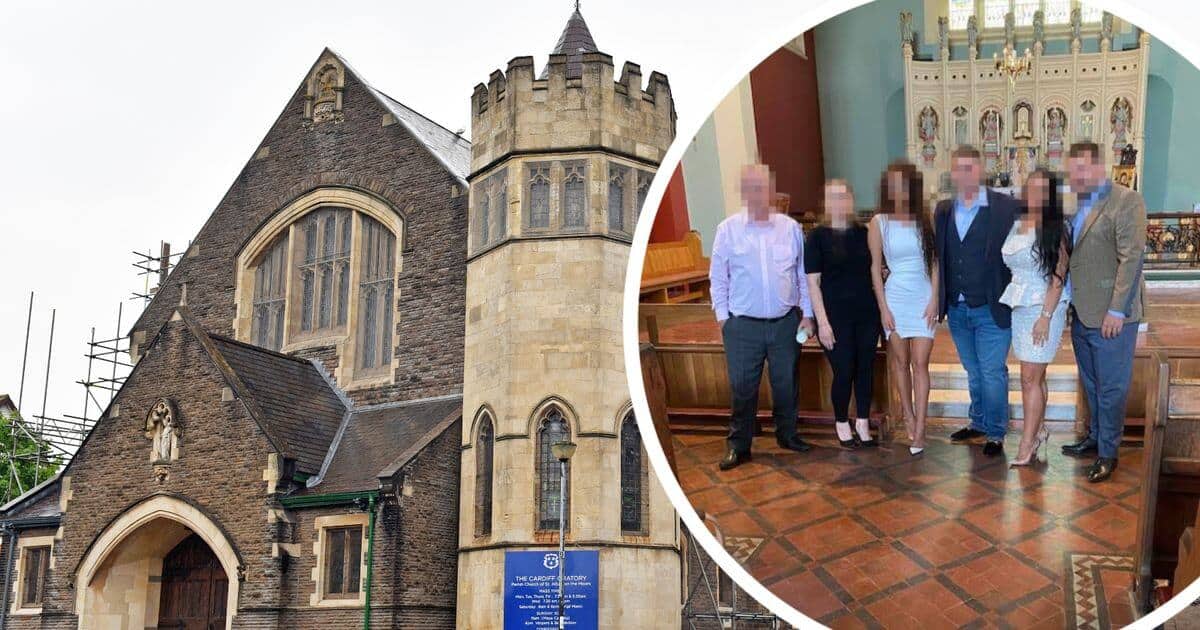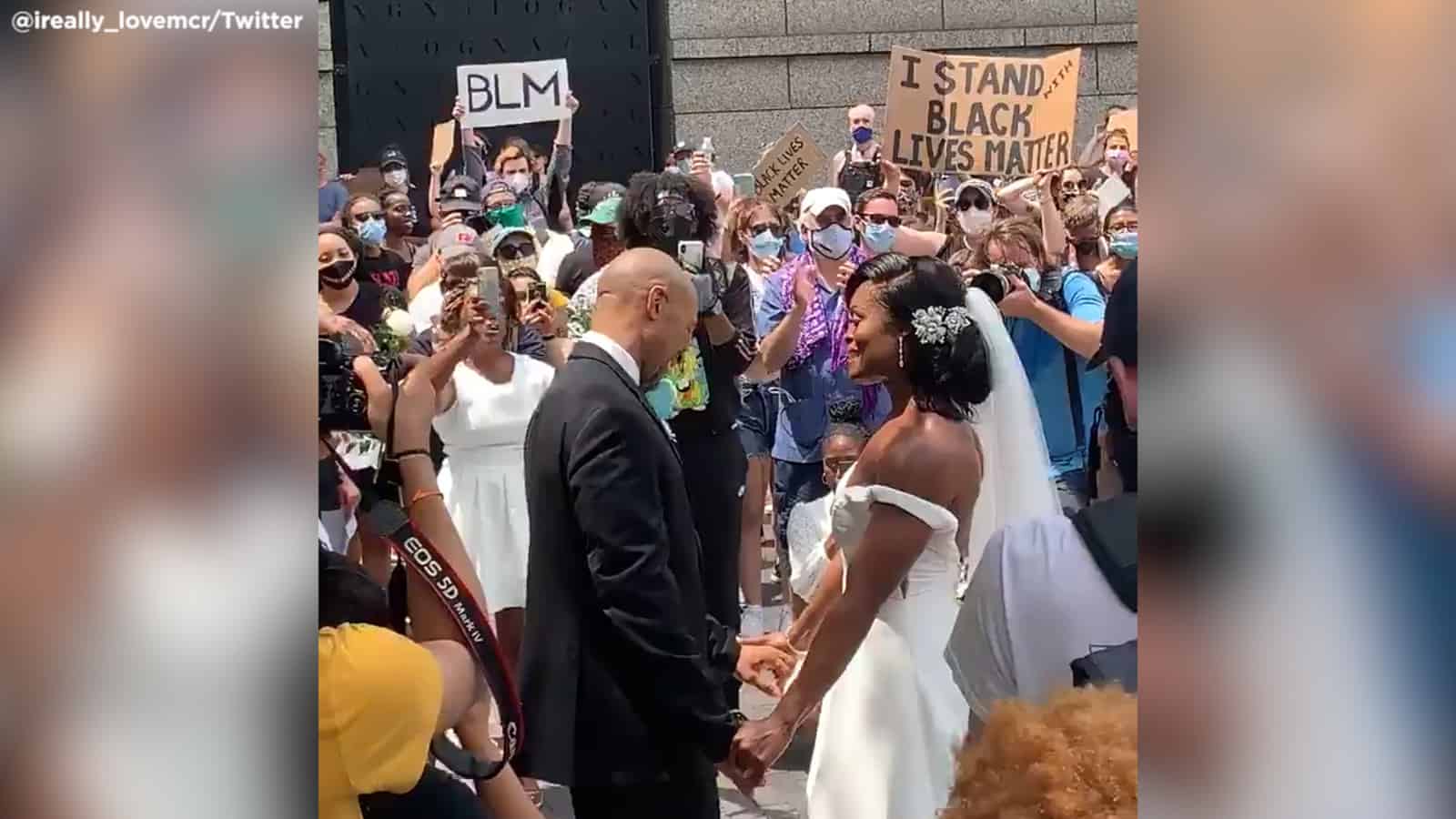How to have a modern wedding ceremony
but retain the traditional format

How do you have modern wedding ceremony and retain the traditional elements of the ceremony that you love?
Would you like to combine time honoured traditions with a modern wedding ceremony?
Well read on. I’ll shall explain how you can have a thoroughly modern wedding ceremony but with echoes of the traditional that we all love and are familiar with.
Modernising tradition
If it’s not broke don’t fix it. In normal circumstances I am quite a supporter of this theory. But in modern wedding world I don’t entirely agree. The modern couple still like the traditional format of ceremony but want to modernise it.
I firmly believe that many millennials and indeed the generations to follow and particularly those whose parents were married in church, are now thinking that this is not the route they want to take for their own wedding.
They want to have a modern wedding ceremony.
A while back they would have automatically followed suit but times have changed. Forward thinking couples have come to realise that their wedding ceremony can have a bit of both.
Keep a traditional format but make it unique, customised, fun and less formal. In other words a modern wedding ceremony.
The Registrar’s civil ceremony
This wish to move away from church ceremonies is why so many have turned to civil ceremonies conducted by the Registrars.
The order of service still follows a fairly traditional format and these ceremonies could be considered modern because they have become, without question, more popular and commonplace.
But I maintain this is not because of the ceremony more because of the location.
Who wants a dull ceremony?
There is no doubting that civil ceremonies have come a long way. They are no longer held at impersonal registry offices but at beautiful indoor and outdoor licensed venues.
But despite the beauty of these venues the wording permitted for the actual ceremony is very restrictive in its content. They are not individual. They have no soul. No warmth or depth to them. They are repetitive. They are dull. They are not a modern wedding ceremony.
No element of religion, cultural tradition or spiritual symbolism is allowed. This means that you cannot have hymns, religious readings or prayers or anything recognised as being a symbolic ceremony.
The truth of the matter is that in the main the same generic template is used time and time again with no personalisation at all. Where’s the modernisation in that?
What’s the answer
For a truly bespoke and modern wedding ceremony I recommend you engage the services of a wedding celebrant but I would, wouldn’t I!
Celebrants are trained to provide a tailormade ceremony reflecting you both as a couple and as individuals with no restrictions at all.
Wedding celebrants will introduce modern and fun elements into the traditional format of a wedding ceremony as well as including your own very personal love story.
But choosing the right wedding celebrant is vital. All celebrants have their own style. If you want to have a modern wedding ceremony with a traditional format choose a celebrant that specialises in that.
Formal without formality
Everything about the word ceremony triggers formality. Pomp, protocol, procedure and decorum are just a few words connected to the word.
Modern wedding ceremonies when presented by a wedding celebrant are definitely not any of those things. They are formal without the formality.
On the morning of your wedding there is no necessity to meet with the registrar, a total stranger, and be ushered off to complete the official marriage register formalities.
All those legals will have been completed days earlier. The formality of officialdom is removed immediately.
A wedding celebrant will not be a stranger to you. You will all know each other extremely well by the day of your wedding. And furthermore you have no official legal duties to carry out .
A warm welcome is essential
A modern wedding ceremony should be the pre-cursor to a wonderful party and the wedding celebrant’s role is comparable to that of the host of that party.
Your wedding celebrant will be warm, enthusiastic and above all smiley and friendly welcoming your guests and introducing themselves to everyone.
They won’t forget names, they will conduct your ceremony like you have been friends for years. They will look and speak to all of your family and friends.
With so many different people attending and often across generations it is important that everyone should feel relaxed and part of this great occasion.
A great way to create a relaxed and informal atmosphere is for the wedding celebrant to introduce the bridal parties.
The best man, groomsmen and bridesmaids are after all important people to the couple. It is even possible that some guests may not know how they fit into the couple’s lives or what roles they have played.
This introduction can include amusing anecdotes or words of thanks. The guests will undoubtedly hear something new, something familiar or just have a good laugh.
In so doing everyone feels involved and included in this momentous occasion.
Communal vows
It is not only the couple who are making vows on their special day, oh no!
Modern ceremonies are all about getting your guests involved and a great way is to ask them all to stand. Repeat after me and make the first vow of the day. It’s light hearted, fun and engaging and of course can be personalised so that it is unique to the couple.
I often ask them (amongst other things) to vow that they will speak to and laugh with friends and strangers and throw themselves into the spirit of the day. That’s, after all, what a good party is all about.
Love Story
An integral part of a modern wedding ceremony is the inclusion of the couple’s love story. Alongside the vows and exchange of rings for me this is the key to a modern ceremony.
So often the love story is where the humour comes from. Believe it or not although all the guests and family may know how a couple met, some even possibly having been a witness to that moment, there will be parts of the story they will have no idea about.
Sharing some highs, the more fun, romantic or crazy the better and even a mention of the not so highs make for an engaging way for the guests to have a sneeky peak into the couple’s romance.
It’s also a lovely way of bringing some personal background into the ceremony
A ring warming
The origins of a ring warming can be traced back to Ireland. It is an extremely personal way to include the guests in your ceremony.
The concept of a ‘ring warming ceremony’ is that the wedding rings have been “warmed” forever by the well wishes, positive vibes and loving energies of each guest.
The wedding rings are tied to a piece of ribbon, placed in a box or fastened to a cushion before the wedding ceremony.
Each guest will be asked to hold the rings for a moment and make a silent wish for the couple and their future together. Alternatively just a kiss or a little squeeze. Whatever it is a sweet and interactive gesture.
Once the rings have been passed to everyone they will be returned to the couple or the best man for safe keeping until the ring exchange.
Handfasting
Handfasting may be one of the oldest wedding rituals but it can be adapted and personalised in a moving, intimate and contemporary way.
It is a very visible acknowledgement of the couple’s connection and adds an intimate element into your ceremony.
It is becoming increasingly popular for all couples looking for a spiritual way to acknowledge and celebrate their love and commitment.
The couple hold hands so that their wrists or pulse points are touching. A length of ribbon or cord is then looped around.
Couples can have fun choosing the colours of their ribbons. Colours all have their own symbolic meanings. The obvious being red for love. However it can also symbolise strength, fertility, courage, health, vigour and passion.
Frankly you can choose whichever colours you want. Just let your creative juices flow. The most important thing is for the colours of the ribbons to be symbolic and personal to you.
A single cord can be used, comprised of different colours or several ribbons or cords draped individually.
Family members and/or friends can be invited to come forward and drape their ribbon on the couple’s wrists. This introduces yet more symbolism as their ribbons can represent their special relationship with the couple or their wishes for them.
Hands are considered to be a connection to the heart and a hand blessing symbolically brings two hearts together.
Before the untying of the knot there is a short but meaningful reading called the ‘blessing of the hands’.
Although handfastings can be a stand alone ceremony I integrate it as a mini ceremony. It fits perfectly following the vows and before the ring exchange and is an ideal way introducing a modern element into a traditional ceremony.
And to finish yes ‘tying the knot’ is the euphemism for marriage.
So as you can see there are many many ways of modernising a wedding ceremony. All the suggestions I have made can be included into the traditional format of a wedding ceremony. It’s tried and tested. Why change it? Just bring it up to date I say.
My thanks to Kathryn Clarke Mcleod Photography, Rockrose Photography Paige Photography and Jamie Denny Photography for all these wonderful images.
The post How to have a modern wedding ceremony appeared first on Fanfare Ceremonies.
This content was originally published here.

